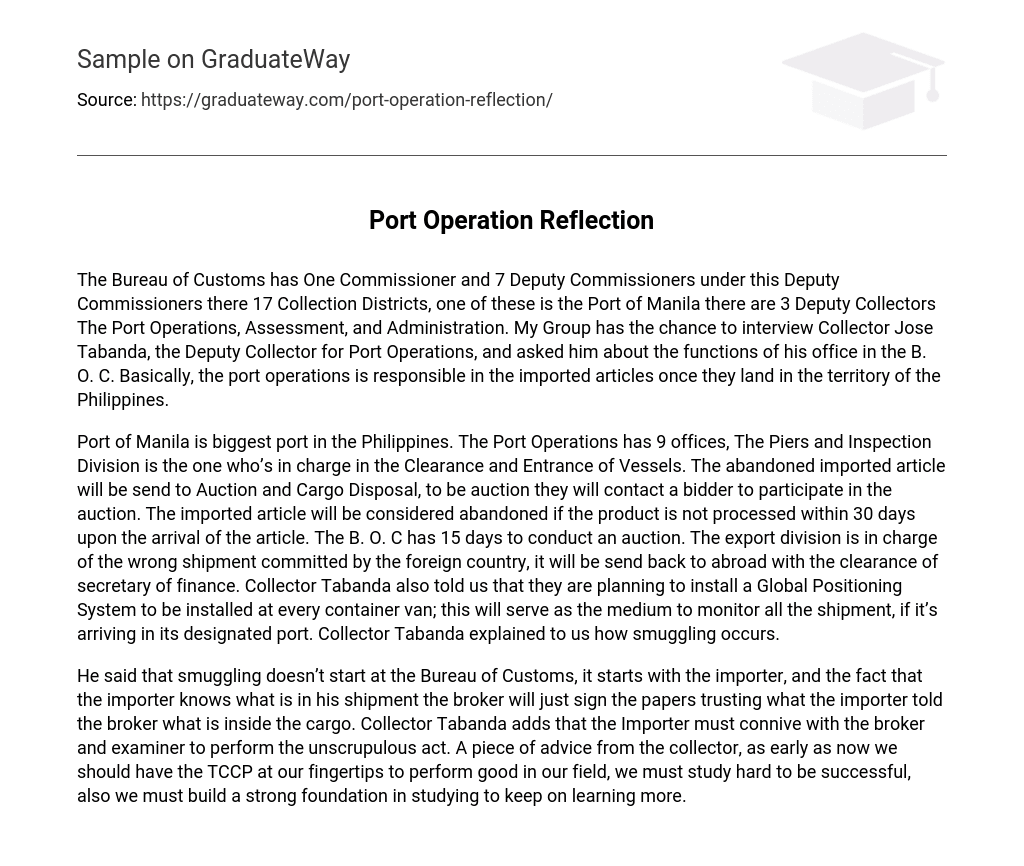The Bureau of Customs consists of one Commissioner and 7 Deputy Commissioners. Under these Deputy Commissioners, there are 17 Collection Districts. One of these districts is the Port of Manila, which has 3 Deputy Collectors responsible for Port Operations, Assessment, and Administration. During our interview with Collector Jose Tabanda, the Deputy Collector for Port Operations, we inquired about the functions of his office in the B.O.C. Essentially, the Port Operations division is accountable for handling imported articles once they arrive within the Philippines’ territory.
The Port of Manila is the largest port in the Philippines, consisting of nine offices. The Piers and Inspection Division is responsible for clearing and allowing vessels to enter. Any abandoned imported goods are sent to Auction and Cargo Disposal, where bidders are invited to participate. Goods are deemed abandoned if not processed within 30 days of arrival, and the Bureau of Customs (B.O.C) has 15 days to conduct an auction. The export division handles incorrect shipments from foreign countries, which are sent back with the approval of the Secretary of Finance. Collector Tabanda also mentioned plans to install a Global Positioning System on every container van to monitor shipments and their arrival at designated ports. Additionally, Collector Tabanda provided an explanation on how smuggling occurs.
According to the speaker, smuggling does not originate at the Bureau of Customs but rather with the importer. The speaker emphasizes that it is the importer’s knowledge of the shipment contents that prompts the broker to sign the papers, relying on the importer’s information. Collector Tabanda further suggests that the importer must collaborate with both the broker and examiner in order to engage in dishonest practices. The collector offers advice, suggesting that familiarity with the TCCP is crucial for success in our field. The collector also emphasizes the importance of studying diligently to establish a solid foundation for continuous learning.





